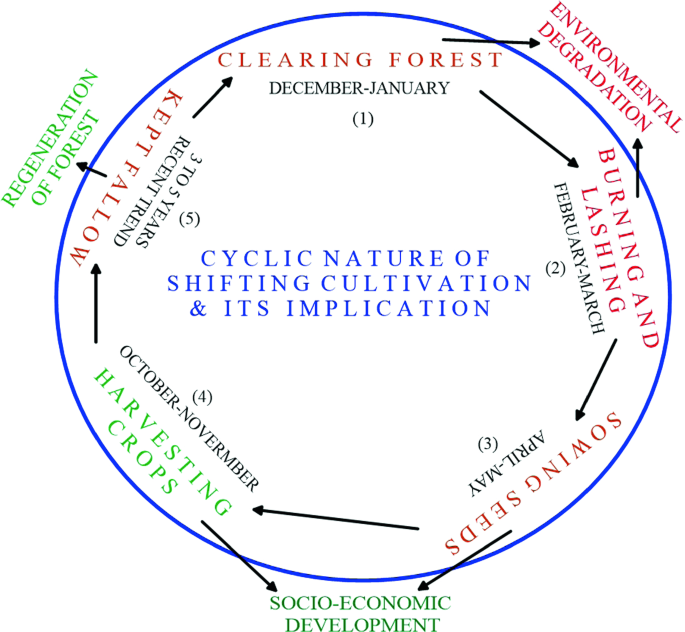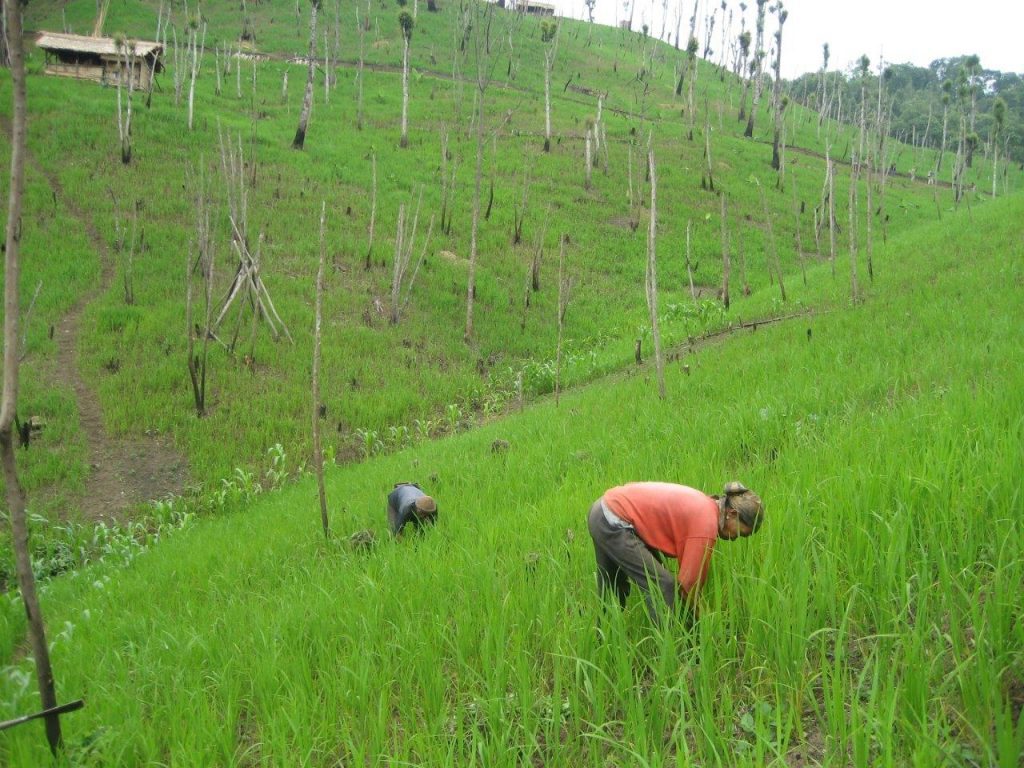Shifting Cultivation Is Still Practiced in Many Parts of
They dont own a piece of land where they can cultivate their own crop. Shifting cultivation though destructive is still practiced in many parts of the world because many people still poor.

Farming Is Fighting A Dayak Community Resists Unjust Regulations And Land Privatization Terralingua
The vegetation is usually cleared by fire and the ashes add to the fertility of the soil.

. Shifting Cultivation is practiced in different regions of world with local names. And loss of fertility. Their land due to remoteness poor access to markets and undulating terrain leaves them with few alternatives.
Most of them are located in bamboo forests. Their land due to remoteness poor access to markets and undulating terrain leaves them with few alternatives. Why do you think shifting cultivation is still practiced.
Every year the forests are cut and burnt. Q2 Why do you think shifting cultivation though destructive is still practiced in many parts of. Shifting cultivation in Northeast India is still prevalent and is practiced by the indigenous communities.
They dont own a piece of land where they can cultivate their own crop. Shifting cultivation continues to be a predominant agricultural practice in many parts of India despite state discouragement and multipronged efforts to wean indigenous communities away from it. As a result a large-scale degradation of forest and also landscape takes place he said.
5 The management of shifting cultivation remains a fundamental imperative for agricultural development planning in the uplands of northeast India. Therefore we can take it that the tribal. In northeast India a 2018 report released by the Indian government revealed that an area of 8500 square kilometers is still being used to practice shifting cultivation SC an agricultural system practiced for centuries.
They share the land in groups. Shifting cultivation continues to be a predominant agricultural practice in many parts of India despite state discouragement and multipronged efforts to wean indigenous communities away from it. Shifting cultivation is the type of cultivation in which the farmers cut trees and clear the land for cultivationThey also burn the uprooted.
They dont own a piece of land where they can cultivate their own crop. However shifting cultivation is still being widely practised in the mountains of Bangladesh and Laos and northeastern India. Topic- Major crops and cropping patterns in various parts of the country different types of irrigation and irrigation systems storage.
Primitive Subsistence Agriculture or Shifting cultivation is widely practiced by many tribes in tropics especially in Africa south and central America and southeast Asia. In the practice of slash and burn farmers would cut the native vegetation and burn it then plant crops in the exposed ash-fertilized soil for two or three seasons in succession. Answered Q2 Why do you think shifting cultivation though destructive is still practiced in many parts of the world.
This farming system has been widely disputed as environmentally destructive and economically unfeasible. Kaypeeoh72z and 4 more users found this answer helpful. Pastoral nomadism is still a dominant way of life many parts of.
If it is practiced in many parts of society it is due to the fact that nomadic societies still exist and they follow the same traditional method of farming. Shifting cultivation is still practiced in many parts of. Shifting cultivation is a group activity.
Therefore we can take it that the tribal people. Shifting cultivation has been part and parcel of the regions tradition and culture since time immemorial and its. Shifting cultivation is still practiced in many parts of.
How is shifting cultivation practiced. Chena - Sri Lanka. Lading - Southeast Asia.
Shifting cultivation is a mode of farming long followed in the humid tropics of Sub-Saharan Africa Southeast Asia and South America. The process consists of cultivating land temporarily and then abandoning it usually for a period of one to two decades so the soil recuperates its. Write an awareness article on how shifting cultivation can be practiced in a sustainable way.
There still exist many tribal groups so shifting cultivation is still practiced. They dont own a piece of land where they can cultivate their own crop. Shifting cultivation though destructive is still practiced in many parts of the world because many people still poor.
Western united states b. Q2 Why do you think shifting cultivation though destructive is still practiced in many parts of the world. Milpa - Central USA Not in Australia.
Shifting cultivation is still practiced in many parts of Select one. Shifting cultivation though destructive is still practiced in many parts of the world because many people still poor. After cultivation and harvesting they move on to other land and repeat the same processAs nomads they move from place to place for agriculture and for survival.
There still exist many tribal groups so shifting cultivation is still practiced. Tavy - Africa. Take for example the tribes dont have the system of individual owning of land.
Meghalaya Treasures May 20 2016. Write an awareness article on how shifting cultivation can be practiced in a sustainable way. 1 Why do you think shifting cultivation though destructive is still practised in many parts of the world - Social Science - Agriculture.
Such interregional variations are explained by several socio-economic institutional and policy factors including population growth government control of common property resources the land tenure system physical infrastructure. Shifting cultivation is the type of cultivation in which the farmers cut trees and clear the land for cultivationThey also burn the uprooted trees and mix their ashes in the soil so as to fertile the soil. Shifting cultivation is practiced exclusively in forest areas.
Shifting cultivation though destructive is still practiced in many parts of the world because many people still poor.

Policy Forum Shifting Cultivation And Agroforestry In The Amazon Premises For Redd Sciencedirect

Pdf An Overview Of Shifting Cultivation With Reference To Nepal

How To Harden Off Plants For Transplanting Sustainable Garden Hardening Off Seedlings Seedlings

The Bagata Tribe Is Regarded To Be One Of The Aboriginal Tribes Of India Tribal Communities Reside In Different Parts Of Tribal Society Tribal Community India

Chakra Wheel Necklace Yoga Chants Yoga Mantras Kundalini Yoga

Why Do Indigenous Communities Persist With Practising Shifting Cultivation

Mithun Bos Frontalis The Domesticated Free Range Bovine Species Is An Important Part Of The Livestock Production Syste Animals Endangered Animals Pet Birds

Indian Baiga Tribe Tattoo Body Art Body Art Tribe Body

Economic Implications Of Shifting Cultivation Springerlink

Poster Ideas On Organic Farming In India Organic Farming In India Organic Farming Farming Techniques

Shifting Cultivation In Bhutan A Gradual Approach To Modifying Land Use Patterns A Case Study From Pema Gatshel District Bhutan

Managing The Shifts In Shifting Cultivation Icimod

Pdf Shifting Cultivation In The Mountains Of South And Southeast Asia Regional Patterns And Factors Influencing The Change

Shifting Cultivation May Soon Get Legal Stamp Legal Land Use State Forest




Comments
Post a Comment